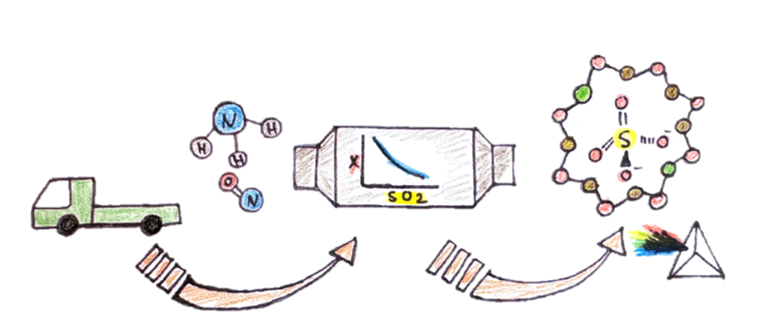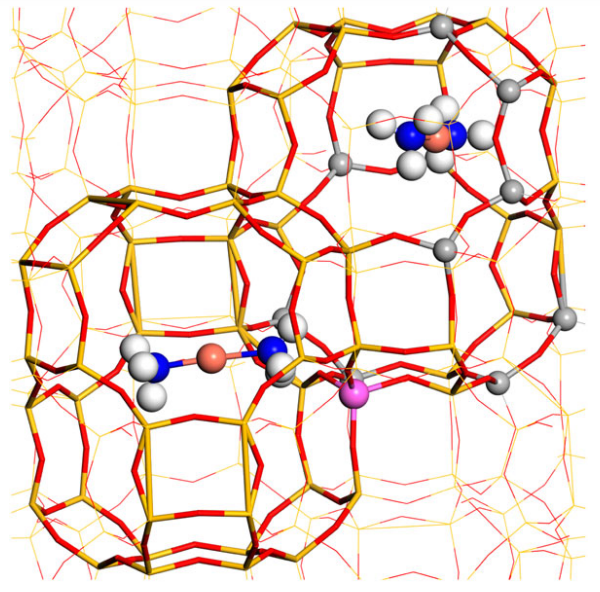The flagship journal of the Royal Society of Chemistry have accepted and published another article featured by CHASS.
This contribution aims at analysing the current understanding about the influence of Al distribution, zeolite topology, ligands/reagents and oxidation state on ions mobility in Cu-zeolites, and its relevance toward reactivity of the metal sites. The concept of Cu mobilization has been originally observed in the presence of ammonia, favouring the activation of oxygen by formation of NH3 oxo-bridged complexes in zeolites and opening a new perspective about the chemistry in single-site zeolite-based catalysts, in particular in the context of the NH3-mediated Selective Catalytic Reduction of NOx (NH3-SCR) processes. A different mobility of bare Cu+/Cu2+ ions has been documented too, showing for Cu+ a better mobilization than for Cu2+ also in absence of ligands. These concepts can have important consequences for the formation of Cu-oxo species, active and selective in other relevant reactions, such as the direct conversion of methane to methanol. Here, assessing the structure, the formation pathways and reactivity of Cu-oxo mono- or multimeric moieties still represents a challenging playground for chemical scientists. Translating the knowledge about Cu ions mobility and redox properties acquired in the context of NH3-SCR reaction into the field of direct conversion of methane to methanol can have important implications for a better understanding of transition metal ions redox properties in zeolites and for an improved design of catalysts and catalytic processes.
Signorile, M., Borfecchia, E., Bordiga, S., & Berlier, G. (2022). Influence of ion mobility on the redox and catalytic properties of Cu ions in zeolites. Chemical Science, 13(35), 10238-10250.

All CHASS resources are open access. Download the publication through Zenodo

